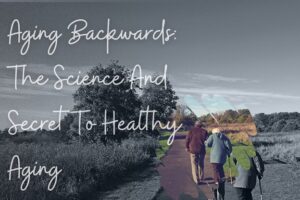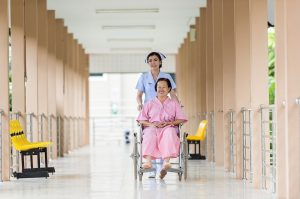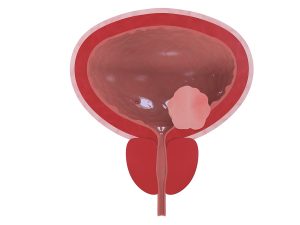The Promise of Smart Home Technology for Seniors Living at Home : Brooklin Nash
“With the IoT, we’re headed to a world where things aren’t liable to break catastrophically – or at least we’ll have a hell of a heads’ up. We’re headed to a world where our doors unlock when they sense us nearby.”
~ Scott Weiss
This quote from famous venture capitalist Scott Weiss highlights how much the Internet of Things (IoT) is changing our lives. It’s not just about connected devices and smart refrigerators. It’s about making smart home technology a norm. And it can be a norm that makes independent living for seniors much better in the long run. Here are a few ways smart home technology can directly benefit seniors living at home.
#1: Smart Home Technology Makes Independent Living Safer
Caring for seniors living at home can be both rewarding and challenging. With independent living, safety is always a concern. What happens when a senior loved one needs to be left alone, for example?
By introducing smart home technology into the mix, you can help ensure that your loved one is safe while home alone. The IoT means that seniors living at home can easily access everything they need – from the medicine cabinet to the front door to a voice command for emergency services.
#2: Alerts & Real Time Monitoring Make Independent Living More Realistic
More immediately, smart home technology and IoT makes independent living both safer and more realistic. Tech innovations now allow the control, monitoring and reception of alerts from physical devices in the home. With the touch of a button on an app, you can control appliances, security systems and more.
Users can also receive alerts on heart rate, blood pressure and a host of other health factors. You can have a safe amount of control over the home while letting your senior loved one live their independent life.. With this level of innovation, there is less of a necessity of back and forth.
#3: IoT Makes Independent Living More Accessible
In the past, there were generally two options: moving seniors into assisted living homes or having them move in directly. Smart home technology empowered by IoT and a fine tuned UX means seniors can access the tools they need to remain independent. There is no need for fancy tech that is difficult to understand.
What other ways do you see the promise of smart home technology taking hold for seniors living at home?
Brooklin Nash writes about the latest tools and small business trends. When he’s not writing, you can find him reading YA dystopian fiction (with guilty pleasure) and cooking.
Aging Backwards: The Science And Secret To Healthy Aging
You will typically hear the word aging having negative connotations attached to it. This stems from the fear that as you age, you will not be able to enjoy life as you once did in your youth. But many ignore how it represents the beauty of life and the nature of the universe. While we cannot, in the literal sense, reverse aging, we can ensure that our aging process is as healthy as possible to enjoy life to its fullest.
Scientists are actively researching how to slow down to prevent age-related declines in physical health. However, we cannot ignore the archive of data on how to ensure a graceful aging process. Many have already discovered ways to improve the chances of maintaining optimal health. Small changes in your routine can go a long way. For instance, adopting simple, minimal, and healthy patterns like switching your diet and incorporating supplements like kava kava powder, limiting alcohol intake, or even managing exercise routines.
Let’s look at some secrets to healthy aging backed by science.
Prioritizing physical health
Indulging in physical activity is the cornerstone of healthy aging. People who exercise regularly not only live longer but also may live better with more years of life without pain or disabilities.
A study with adults aged 40 and older found taking 8,000 steps or more per day compared to taking 4,000 steps was associated with a 51% lowers risk of death from all causes. Increase the number of daily steps by engaging in activities that keep your body moving, like gardening, taking the stairs instead of the elevator, and walking your dog.
You can also make smarter food choices to help protect yourself from health problems as you age and may even help improve brain function. Much of the Mediterranean-style pallet, which includes whole grains, fresh produce, and healthy fats, but less dairy and more fish than a traditional American diet, may positively impact health.
A good night’s sleep
The importance of sleep in your youth is not stressed upon enough. Staying up late can, in many ways, hinder how active your brain stays during the day or work hours. While the negative impact may not show immediately, it may lead to visible problems once you age. Sleep helps you stay alert and healthy, whereas a lack of sleep will cause irritability, depression, and forgetfulness are more likely to have falls or accidents. It is also an essential factor contributing to your memory and mood. In a study with adults over 65, researchers found that people with poor quality of sleep had a more challenging time problem-solving and concentrating than those who received a good night’s sleep on a regular basis.
Additionally, inadequate sleep is associated with the buildup of beta-amyloid, which is a protein involved in Alzheimer’s disease. Conversely, getting good sleep is associated with lower rates of heart disease, insulin resistance, and obesity. It can also improve your decision-making skills and creativity.
Keep a gratitude journal.
Life may not be perfect, and you will encounter many hurdles in life that will take multiple forms. It’s important to remember that stress takes years off one’s life, so to counter stress, count all the blessings in life. Practicing gratitude is not just a simple “stay positive” outlook creating a placebo effect. The benefits of optimism are so powerful that they can help you to live a longer life. A study found that older adults with an optimistic disposition are at a lower risk of dying from any cause, with an exceptionally reduced risk of dying from heart disease.
Take a moment out of your day to report everything in life you are grateful for. Gratitude journaling will protect your physical and mental well-being as you age further into your life.
Staying social and connected
Staying socially engaged plays a vital role in maintaining cognitive functioning during your aging process. It helps the hippocampus, which is an area in your brain responsible for memory, stay active. Since depression is a significant contributor and indicator of poor mental health, keeping a social life will prevent loneliness and depression. Be more vocal about get-togethers, attend functions, and participate in activities that maximize your chance of socializing and making more friends.
Maintaining hobbies like baking or sports is also important since they are healthy for the mind and body and can provide more opportunities for social benefits.
Bottom Line
Maintaining physical health is key to living better with more years of life without pain or disabilities. This includes a good diet and regularly indulging in exercise. Sleep is another important element that contributes to a healthy lifestyle. It ensures a healthy mind and body. Another activity that focuses on keeping a healthy mind is gratitude journaling, which helps you live a longer, more fulfilling life. Remember to keep your social life alive, stay in touch with family and friends, and attend several functions to keep your mind active and your memory strong. We hope you find this article insightful.
Guest Blog: How the Internet Has Changed How Society Cares for Seniors
Today’s technology is not only for the young. The digital age has brought with it innovations which aim to benefit seniors. A new age of Internet of Things (IoT) devices has made senior care better, more efficient and less costly. It aims to eliminate isolation, which has been a major concern for many years. It has provided caregivers in the healthcare industry a tool to allow seniors to be more independent and remain connected with friends and family.
When it comes to senior care, the IoT is revolutionizing the way seniors are living their lives. Assisted living communities are using the internet to connect and humanize senior care. Communities such as the K4Community leverage technology to make seniors’ life simpler, healthier and happier. These communities integrate IoT wearables such as watches or belt clips. They also have floor sensors that provide real-time monitoring to prevent falls and other injuries. Other types of sensors monitor heart rate, blood pressure and oxygen levels to immediately alert caregivers when there’s an emergency.
To lead a healthy, active lifestyle, IoT devices go beyond the standard activity trackers. Devices are more targeted towards the individual’s needs, alerting them when to rest, whether they’re standing up or down too fast and when to give their knees a break. Food and hydration is also considered, with wearables reminding seniors when it’s time to eat and how often to drink to maintain proper hydration. When it comes to sleep, sensors can also alert caregivers whether a senior needs help getting in and out of bed. With the internet being all about connection, keeping seniors in contact with friends and family is one of the best things the IoT can provide to improve senior health. Seniors are spending more time online, using social networks and other platforms to connect with loved ones.
This trend is only going to get more prevalent. Research shows that using the internet makes people happier and increases life satisfaction, especially for seniors. A study published in the Journal of Computers in Human Behavior shows that life satisfaction was much higher among seniors who use the internet than those who don’t. The ability to keep in touch and prevent the cycle of loneliness and isolation in an advanced age has done more for senior health than any medication. It is no wonder then that internet use among seniors rose from 8% to 34% between 2003 and 2012, as cited by the Journalist’s Resource. The empowerment that the internet and technology have given seniors is invaluable to their health. Such developments revolutionized the way society and healthcare providers care for the elderly.
With Baby Boomers contributing to an increasingly aging population, the need for caregivers and connected assisted living communities is becoming greater than ever. In order to provide quality healthcare to seniors, healthcare is not just about technology but also about the people who provide it. Maryville University details how general healthcare workers can specialize in senior services to provide care for an aging population. Healthcare and senior care are becoming two of the fastest-growing industries. Boosted with the aid of technology and IoT devices, they provide a way to create a better quality of life for seniors, while reducing the costs of healthcare at the same time.
Article submitted by Tanya Olivers
Markham Smile Center: Best Ideas for Your Cosmetic Dental Smile Makeover
A smile is contagious and can uplift the mood of other people. Be it from simple things or bigger ones, we smile to show that we are glad about it. Sometimes we lose what we call spark in us. There are situations in our life that we lose our confidence to smile, not because we are unhappy, but because our teeth don’t look that good. Many people lose their self-confidence because of their teeth.
Thus, these problems could still be fixed with the help of experts. Bringing back the smile you once have will not be a problem anymore as Dental Makeovers are here to save your day. To address the specific problem, you have the Cosmetic Dental Smile Makeovers. It could help you with your teeth problems and bring back the best smile you’ve ever had.
Ideas for a Smile Makeover
- Teeth Whitening
People especially those who are into smoking, as well as those who have poor oral hygiene, are prone to tooth discoloration. Many individuals have undergone this problem. And, it truly affects their day-to-day interaction with others. Good thing, there’s a solution to confront this issue today. The teeth whitening solution is the answer for teeth discoloration. The process is mainly done with the guidance of the dentist. A solution is applied to your teeth that will penetrate and break the stains on your teeth surfaces. So, if you have a problem similar to this, you can visit your dentist and undergo a tooth whitening procedure.
- Dental Veneers
Aren’t you happy with how your teeth look? Well, these might be the solutions you’ve been looking for. This process is mainly the solution given for individuals who have an issue with their teeth appearance. Improving the way your teeth look with this procedure is helpful. It covers your tooth that changes its color, size, shape, and even length.
Dental Veneers are longer-lasting, which means you just need to visit your dentist from time to time. This is to keep them safe from any crack and damages. Thus, the cost of this solution is expensive yet if you can afford this, you can bring back the best smile you’ve ever had then.
- Tooth Implants
Tooth Implants or Dental Implants are the processes employed for patients who want to have an artificial tooth. This process replaces the old tooth you have by attaching a metal, screw-like one on your gums beneath the jaw or skull and covered with replacement or permanent teeth that will act as your tooth later on.
This may sound too painful and may take 1-2 weeks for its initial healing process for 3-6 months. The dentist attaches the implants to the jaw’s bone. Thus, the result will surely satisfy your need. Especially for some who lose their tooth due to decay, you can still bring back the tooth in its new and hefty capability.
- Enamel Shaping and Recontouring
It is often called cosmetic contouring or Enameloplasty. This process is done to help people with unequal shapes and with sharp-edged dental imperfections. This changes the form making it look perfect and free of any unbalance forms. The process goes where enamel (the hard-protecting layer of your tooth) is reshaped through drilling or laser. This process is often quick and painless. This event doesn’t require any recovery period. Visit your dentist to check whether these solutions are right for the problem you have.
- Teeth Alignment
This might be the most common dental procedure undergone by many today. Teeth alignment is the process where your teeth are arranged perfectly fit and straightened as well. This comes often under braces and clean teeth aligners where people who have imperfect tooth growth commonly choose.
Having your teeth aligned makes it more pleasing and healthier. It protects your gums especially those who have issues with separated teeth. Well, if you wish you have this procedure, there are some precautions you need to consider. Also, you need to visit your dentist to have it fixed when it becomes loose.
Benefits of Getting a Smile Makeover
Having a dental makeover gives us a lot of benefits. Because it could keep our teeth healthy, for some people who have lost or missing teeth, it could help them restore these. For people who have a misshapen or discolored tooth, a dental makeover could fix them in just a period.
These procedures being discussed give back the natural look of the patient’s teeth, smiling at them like they used to have.
Conclusion
It is important to take care of our teeth, especially when we are still young. As we grow older, we lose the elasticity of our teeth. And, this leads to some dental problems which eventually make us suffer. Thus, before we think of undergoing these solutions, as early as today we must be really careful.
By doing the most common way of protecting your teeth which is brushing you could protect them. Thus, for some who have this kind of issue when they are still young, they could still address the problem with these dental solutions.
If you wish to address this kind of issue, you can visit your nearest dental clinic and have them give you the best solution to your problem.
Bladder Cancer Risk Factors and Treatment
Background
This type of cancer occurs mainly in older adults, with an average age at diagnosis of 73 years, with 9 out of 10 cases of bladder cancer diagnosed in persons over age 55. The American Cancer Society (ACS)(2012) reported that over 73,000 cases were diagnosed in 2012 and that this diagnosis rate has been relatively stable over the last 20 years. Men are three times as likely to get cancer of the bladder as women (American Foundation for Urologic Disease, 2008) and the incidence increases with age.
Risk Factors
Risk factors include chronic bladder irritation and cigarette smoking, the latter contributing to over half of cases. Male gender and age are also risk factors.
Warning signs
The classic symptom of bladder cancer is painless hematuria (blood in the urine). Older adults may attribute the bleeding to hemorrhoids or other causes and feel that because there is no pain, it must not be serious.
Diagnosis
Assessment begins with a thorough history and physical. Diagnosis may involve several tests including an intravenous pyelogram (IVP), urinalysis, and cystoscopy (in which the physician visualizes the bladder structures through a flexible fiber-optic scope). This is a highly treatable type of cancer when caught early. In fact, the ACS (2012a ) estimates that there were more than 500,000 survivors of this cancer in 2012.
Treatment
Once diagnosed, treatment depends on the invasiveness of the cancer. Treatments for bladder cancer include surgery, radiation therapy, immunotherapy, and chemotherapy (ACS, 2012). Specifically, a transurethral resection (TUR) may involve burning superficial lesions through a scope. Bladder cancer may be slow to spread, and less invasive treatments may continue for years before the cancer becomes invasive or metastatic, if ever. Certainly chemotherapy, radiation, and immune (biological) therapy are other treatment options, depending on the extent of the cancer.
Immune/biological therapy includes Bacillus Calmette-Guérin (BCG) wash, an immune stimulant that triggers the body to inhibit tumor growth. BCG treatment can also be done after TUR to inhibit cancer cells from re-growing. Treatments are administered by a physician directly into the bladder through a catheter for 2 hours once per week for 6 or more weeks (Mayo Clinic, 2012a). The patient may be asked to lay on his/her stomach, back, and or sides throughout the procedure. The patient should drink plenty of fluids after the procedure and be sure to empty the bladder frequently. In addition, because the BCG contains live bacteria, the patient should be taught that any urine passed in the first six 6 hours after treatment needs to be treated with bleach: One cup of undiluted bleach should be placed into the toilet with the urine and allowed to sit for 15 minutes before flushing (Mayo Clinic, 2012a).
If the cancer begins to invade the bladder muscle, then removal of the bladder (cystectomy) is indicated to prevent the cancer from spreading. Additional diagnostic tests will be performed if this is suspected, including CT scan or MRI. Chemotherapy and/or radiation may be used in combination with surgery. When the cancerous bladder is removed, the person will have a urostomy, a stoma from which urine drains into a collection bag on the outside of the body, much like a colostomy does. Bleeding and infection are two major complications after surgery, regardless of type, whether a TUR or cystectomy is performed. Significant education of the patient related to intake/output, ostomy care, appliances, and the like is also indicated.
http://www.cancer.gov/cancertopics/wyntk/bladder/
Adapted from Mauk, K. L., Hanson, P., & Hain, D. (2014). Review of the management of common illnesses, diseases, or health conditions. In K. L.
Mauk’s (Ed.) Gerontological Nursing: Competencies for Care. Sudbury, MA: Jones and Bartlett Publishers. Used with permission.





